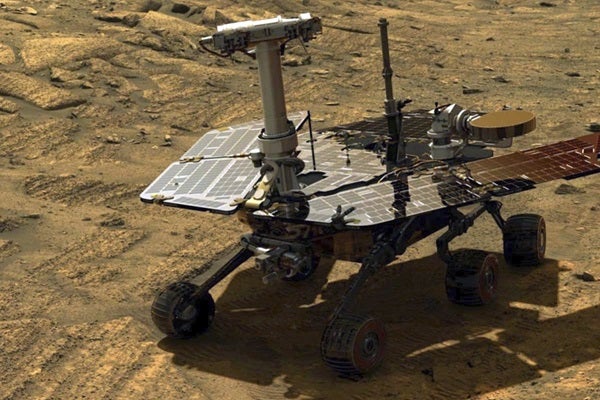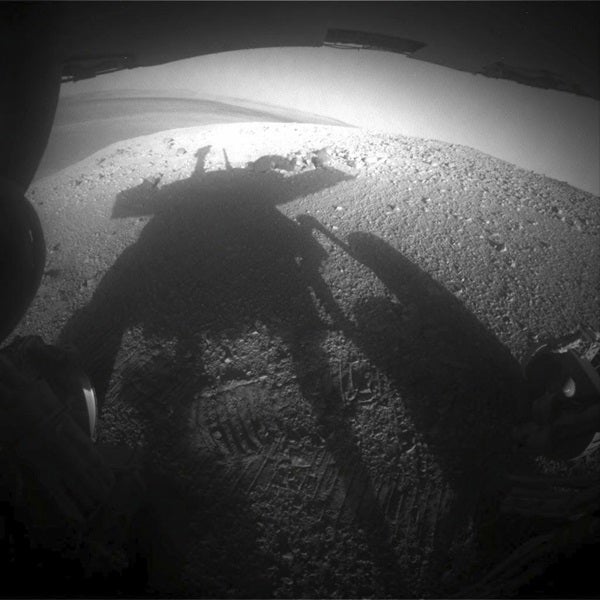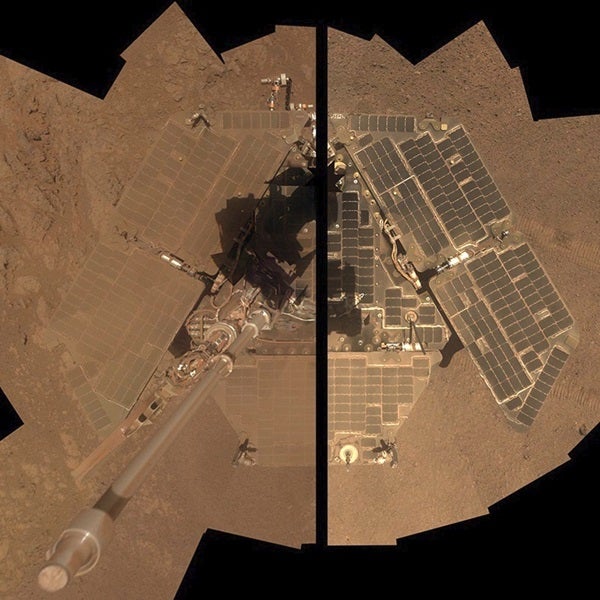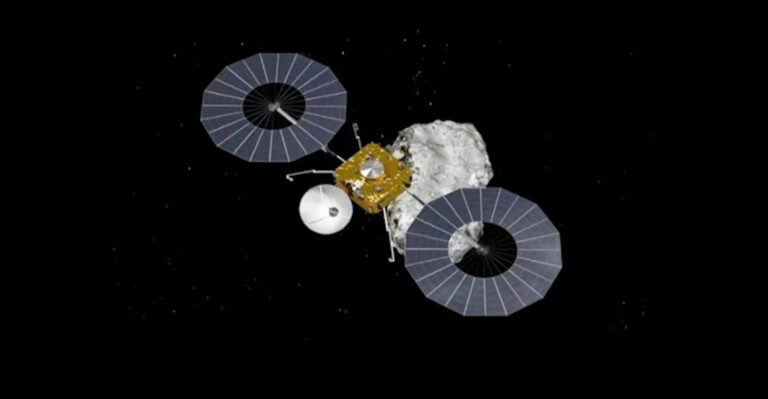The rover ultimately sent back more than 200,000 raw images and traveled a total of 28 miles (45 kilometers), farther than a standard marathon and an accomplishment mission planners never expected. Over the years, Opportunity’s findings have helped researchers reconstruct Mars’ wet past, raising the possibility that microbial life could have survived on its ancient surface.
Mission’s end
On June 10, 2018, Opportunity fell silent under the shroud of a planet-encircling dust storm. By February 6, 2019, NASA reported that more than 835 recovery commands had been sent to the rover over a span of frequencies, including those outside its normal communications range. None had been answered. According to the mission site, this was the team’s “strategy of last resort.”
In a February 13 press conference, NASA announced the completion of the Mars Exploration Rover mission. “Our beloved Opportunity remains silent,” said Thomas Zurbuchen, associate administrator of the Science Mission Directorate, NASA Headquarters, during the broadcast. Zurbuchen had been present the previous evening during a final planned attempt to reach the rover, asking it to respond. But no response came, prompting NASA to conclude that it remains asleep, and the mission can now be honored as a resounding success.
“Today we get to celebrate the end of this mission,” said NASA administrator Jim Bridenstine. He added that scientists will benefit for years from the data taken during Opportunity’s 14 years spent roving the Red Planet.
What killed Opportunity?
Early last June, Opportunity’s location in Perseverance Valley, on the western rim of the crater Endeavour, had been engulfed by a growing dust storm. That storm clouded the Red Planet’s skies with dust and blotted out the Sun. Opportunity, which relied on sunlight to charge its batteries and keep its electronics warm, went to sleep as a protective measure against the prolonged period of darkness. But even after the skies began to clear in early August, the rover slept on.
By September 11, the atmosphere above the rover’s location had cleared enough for adequate sunlight to reach its panels, provided they were relatively free of dust. It also started the clock on a 45-day period that NASA believed would be the best window for getting a response from the rover. Throughout that period, NASA’s Deep Space Network continued broadcasting commands to the rover, which likely suffered a number of faults due to the prolonged lack of sunlight, affecting its internal clock and thus its ability to communicate at preplanned times. By consistently pinging the rover during both preplanned recovery times and other random intervals, engineers had hoped to catch Opportunity when it was awake.
But after the final planned attempt, NASA concluded that Opportunity will remain silent and stationary at its final location.
Dust in the wind.
In January 2014, Opportunity had accumulated a thick coat of red dust, as seen on the left-hand side of this self-portrait. Two months later, wind had blown off much of the dust, as seen on the right-hand side, improving the performance of the solar panels that gathered power for the rover.
Mission complete
As of January 25, Opportunity — with an original mission plan lasting just 90 days and covering only about 1,100 yards (1 km) of distance — had clocked 15 years on Mars. The rover had long surpassed both its original three-month warranty period, as well as its twin rover, Spirit, which fell silent in 2010 at a location on the western side of the Home Plate plateau named Troy. Spirit, which had suffered wheel damage, became stuck and was unable to collect sufficient sunlight during the martian winter, succumbing to a lack of power and cold damage.
“Spirit and Opportunity may be gone, but they leave us a legacy,” said Mike Watkins, director of NASA’s Jet Propulsion Laboratory. The Mars Exploration Rovers, he added, “energized the public about the spirit of robotic Mars exploration.” Their legacy, he said, will live on with the enthusiasm and support for not only Curiosity, currently exploring Mars, but the upcoming Mars 2020 mission as well.

Remembering Opportunity in the words of the scientist that worked with the rover:
We asked NASA scientists to write eulogies for the robot
.












